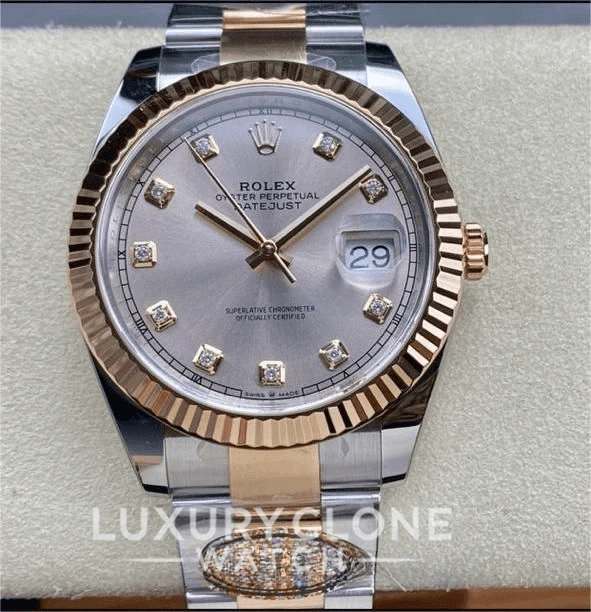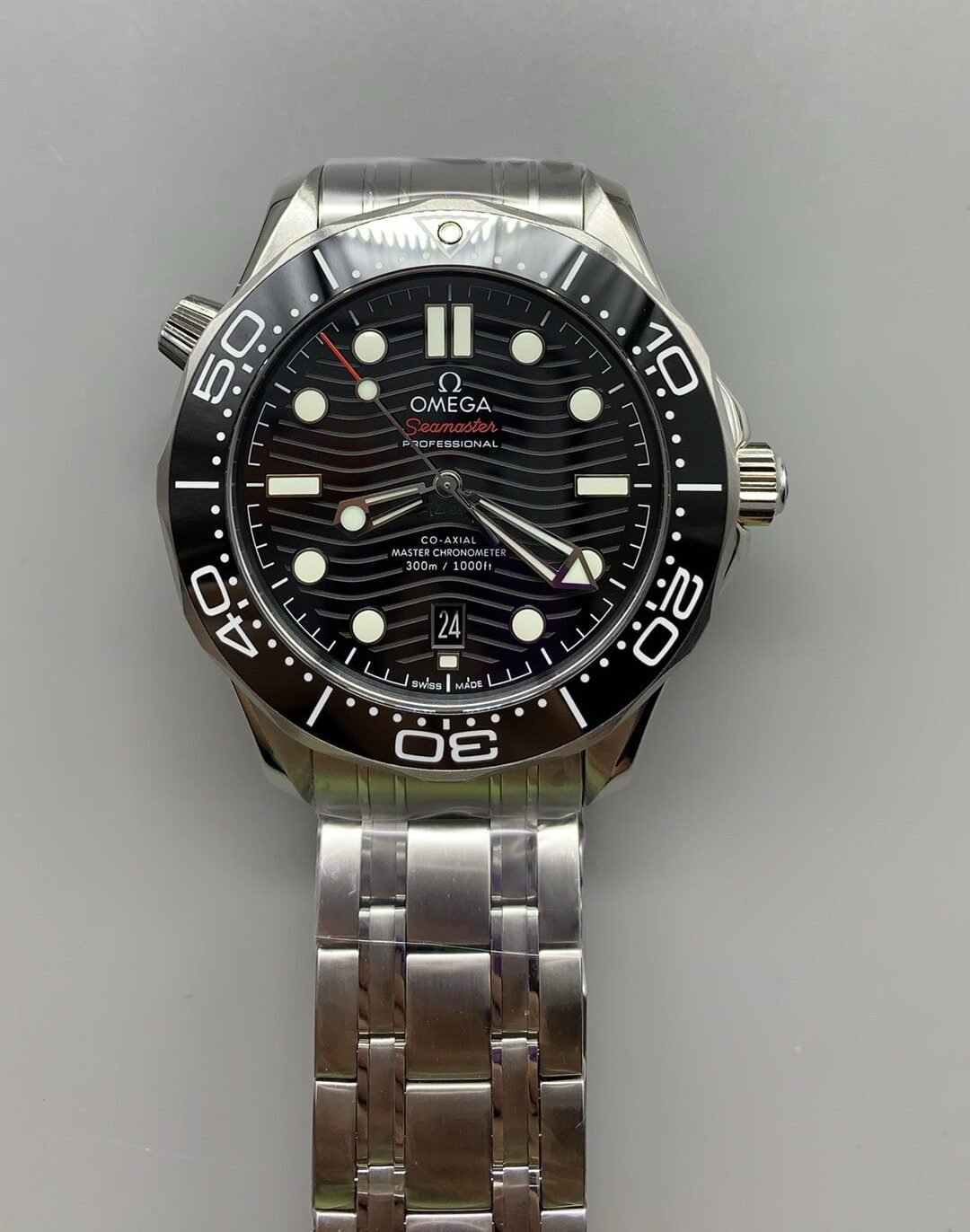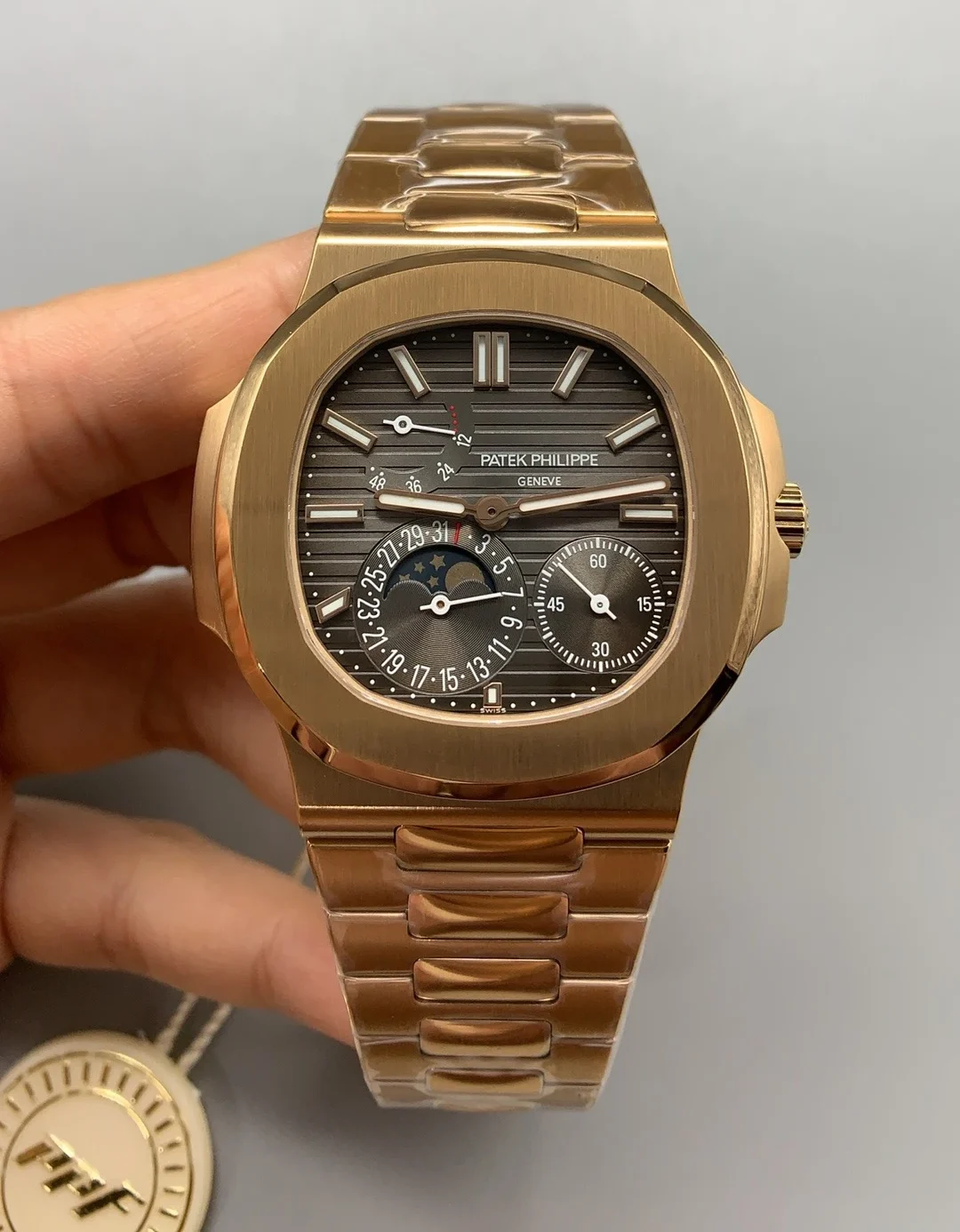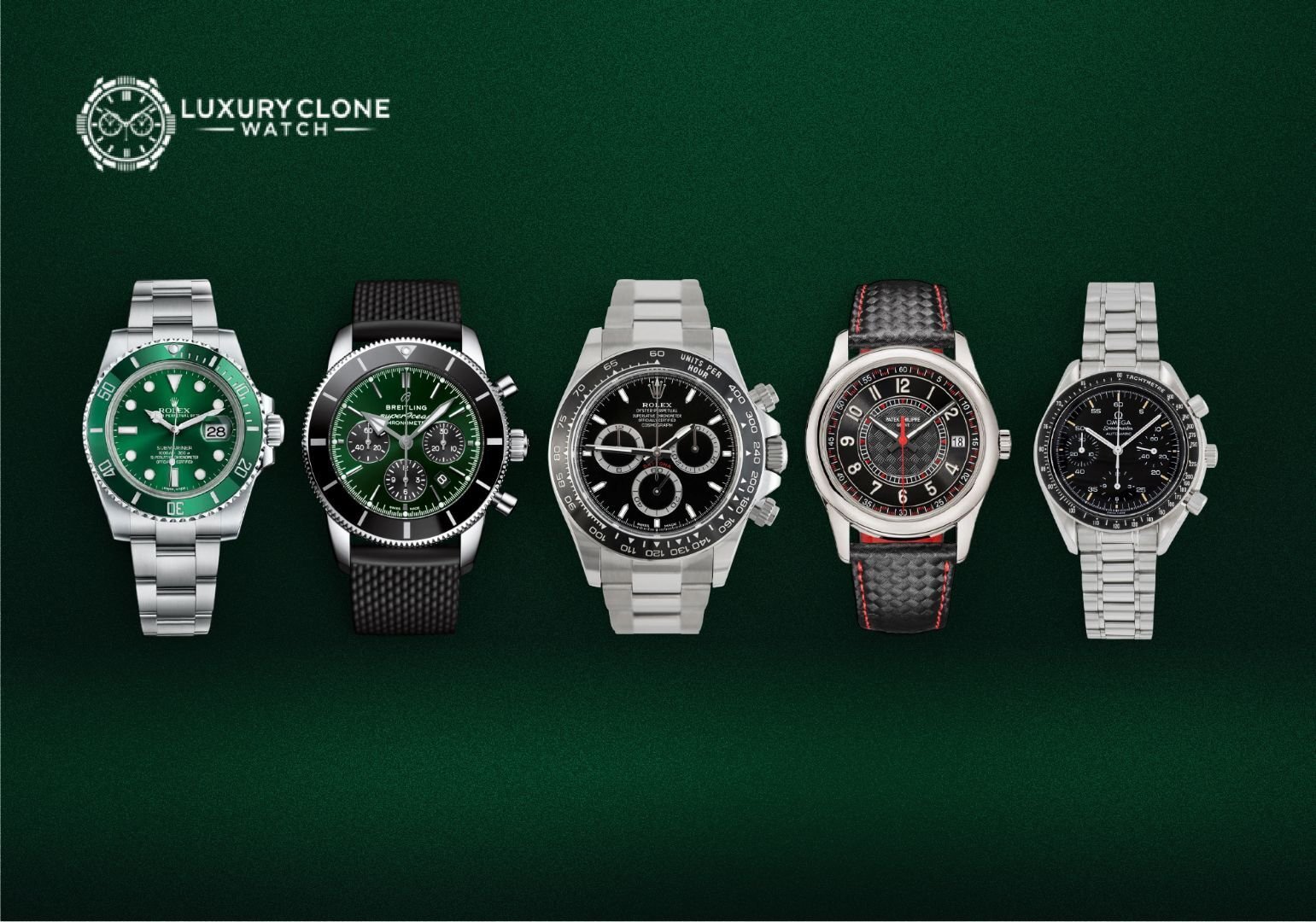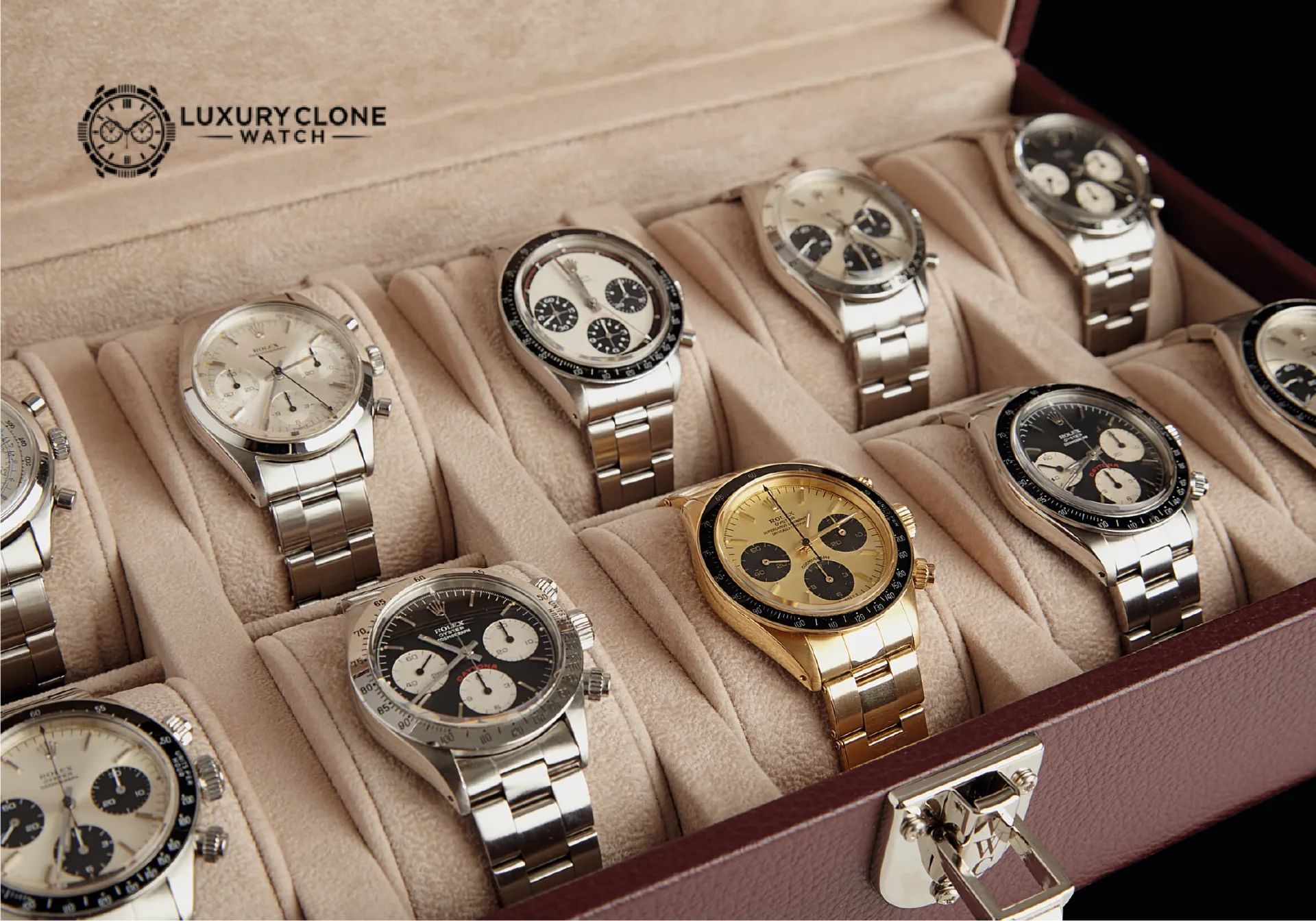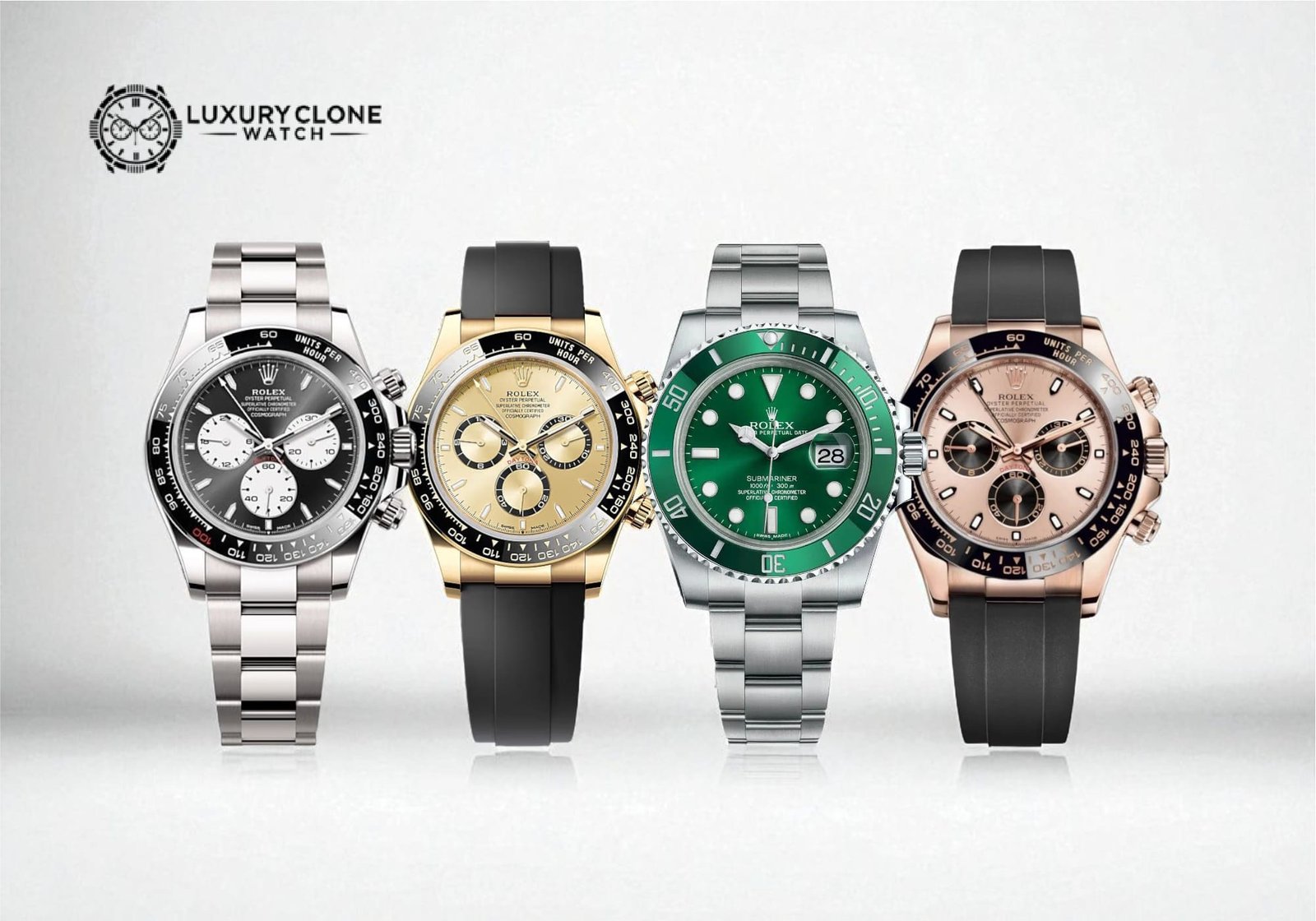Ever wondered what distinguishes a $100 replica from a genuine $1,000 super clone watch?
Well, in 2025, this question is more relevant than ever, as more buyers across the U.S., U.K., Canada, and beyond look for high-quality alternatives to luxury timepieces. Replica and super clone are used interchangeably at times, but do not get it twisted; they are not the same.
A replica is not as sophisticated as a super clone watch, which perfectly replicates the original timepiece from the feel to function to the form, including movement, material, and microscopic details. High-quality fakes are always a close match, though never perfect.
This guide will cover the most important differences between super clones and replicas, explain how to identify a good build, and examine why super clone watches are now sweeping across collectors and first-time buyers, even going global. Read on for our thoughts!
Quick Comparison: Super Clone vs. Replica Watches
| Feature | Low-Quality Replica | Super Clone Watch |
|---|---|---|
| Price Range | Low ($20-$100) | Higher ($500-$1,500+) |
| Materials | Cheap alloys, plastic | 904L SS, sapphire crystal, ceramic |
| Movement | Cheap quartz, poor mechanical | 1:1 Swiss clone movements |
| Accuracy (Visual) | Obvious flaws, incorrect fonts/details | Perfectly mimics every detail from dial to engravings and inscriptions. |
| Weight | Light, hollow | Matches genuine weight closely |
| Functionality | Often non-functional complications | Fully functional complications, smooth operation |
| Durability | Very low, breaks easily | High, comparable to genuine for daily wear |
| Craftsmanship | Rough, unfinished | Meticulous, precise finishing |
| Detectability | Very easy to spot | Extremely difficult to spot without a detailed comparison |
If you have ever picked up one of the cheap replicas before, you might immediately notice the signifying flaws like lightweight construction, noisy quartz movement, incorrect dial markers, or fonts that feel just off. On the other hand, super clones are made with Swiss movements, 904L steel, sapphire crystal, ceramic bezels, and even perfect engravings, which make them almost impossible to tell apart from the genuine watches.
Low-Quality Replicas: The Obvious Fakes
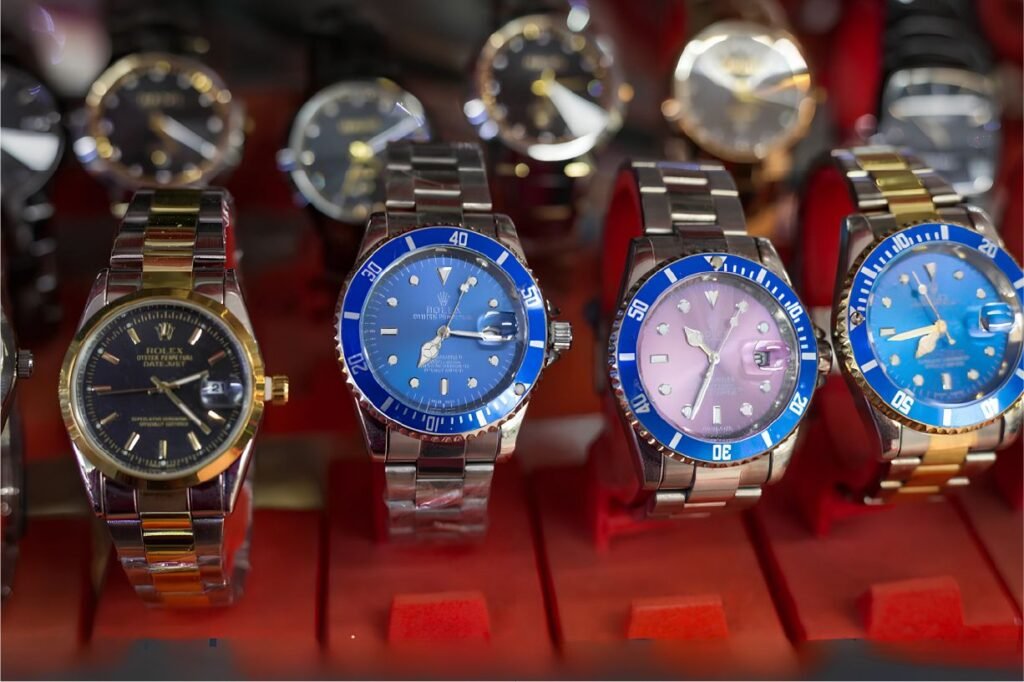
These are the cheapest and most easily identifiable watches, often found in street markets or unreliable online storefronts. They aim for an apparent resemblance but fall far short in every meaningful aspect.
What Makes Them Obvious:
- Low-Cost Materials: Primarily constructed out of low-grade alloys, plastic, or thinly plated base metals. They have a light, insubstantial feel.
- Poor Workmanship: Characterized by rough borders, out-of-alignment dials, smudged print, exposed glue, and crudely finished parts.
- Inaccurate Branding/Logos: Logos can be misprinted, use the wrong fonts, or be incorrectly placed. Serial numbers are usually generic or omitted.
- Movements: The low-cost quartz movements have a characteristic jerky “tick-tick” second hand instead of a smooth sweep.
- Functionality: Complications, like chronographs, GMT, and date windows, may appear on the watch, but they don’t work.
- Price Point: Normally quite low, frequently below $100, and deteriorates quickly.
Super Clone Watches: The Apex of Replication
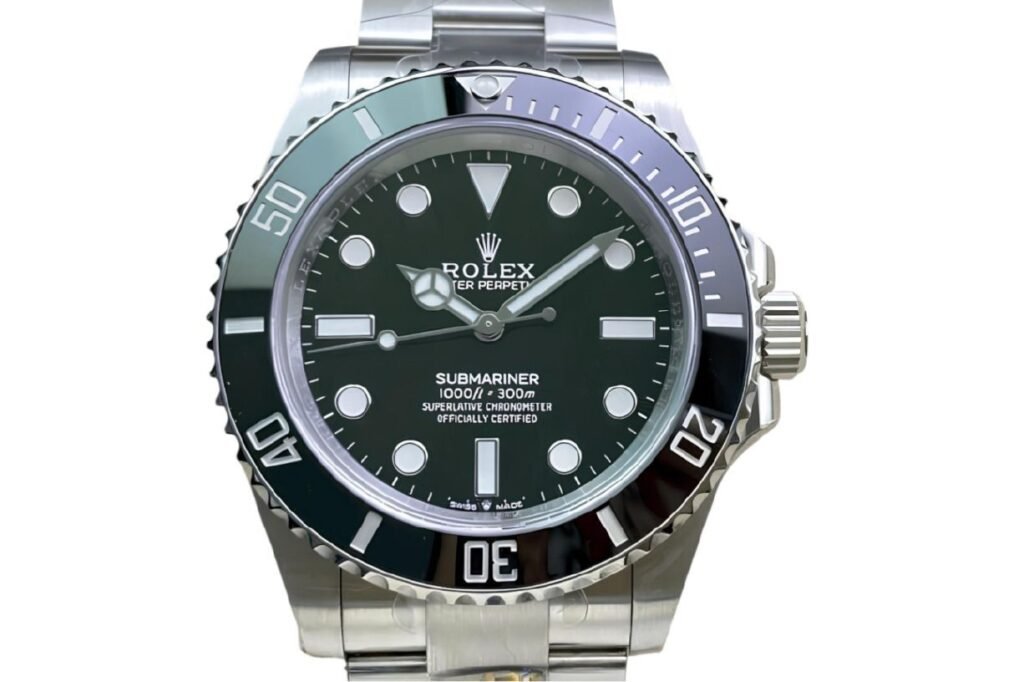
Unlike standard replicas, super clone watches represent the highest standard of craftsmanship in the imitation watch market, offering unmatched accuracy, materials, and performance. If you are curious about the best models available, check out these top 10 super clone watches, the finest 1:1 timepieces on the market.
How Super Clones are Different:
- Premium Materials: Super clone watches are made from the best materials. They typically involve 904L stainless steel, sapphire crystal glass, and transparent case backs. Moreover, in the case of rare metals, the watches have a similar construction to gold, platinum, etc. For example, a super clone Rolex Daytona replicates the rose gold case of the original with near-identical materials.
- Weight: These watches have the same weight and feel as the original. They feel solid in hand and offer an authentic feel compared to replicas.
- High-Fidelity Designs: Super clone watches perfectly imitate the engravings and intricate design elements of genuine models. From dial layouts and writing to case finishes, these watches embody the essence of luxury.
- Movement: These watches feature Swiss movements mimicking the functionality and complexity of the original mechanism with smooth sweeping hands.
- Functionality: Super clones have perfectly working watch complications, as in the genuine watches. Whether it’s the chronograph, GMT, date window, or moon phase, everything works as it did on the original watch.
- Price Point: These watches are typically expensive. Super Clone watches cost between $800 and $1500.
A super clone watch has undergone extensive reverse-engineering of an authentic luxury timepiece. This process involves disassembling a genuine watch, analyzing its components, materials, and movement architecture, and then reproducing them with extreme precision. That’s why these watches are gaining immense popularity among luxury watch lovers.
Want to know who’s behind these ultra-precise builds? Check out the list of best super clone factories shaping the high-end replica watch market in 2025.
Check Out Some Trending Super Clones:
Replics vs Super Clone: Who Should Buy What
Choosing between a super clone and a regular replica depends largely on your priorities, lifestyle, and purpose for wearing the watch. Here’s how to decide.
Super Clone is Ideal for:
- Watch Collectors: Someone passionate about luxury watches like Rolex Submariner or Patek Philippe Nautilus, and doesn’t want to spend 5 or 6 figures, these super clone watches are a perfect choice. These watches mimic both the mechanics and aesthetics of the real watch, providing both the function and feel.
- Test Wearers: Buyers who are considering investing in the genuine model but want to experience its wrist presence and build quality first.
- Detail-Oriented Buyers: Watch enthusiasts who care about perfect alignment, dial realism, weight, tactile feel, and price.
Some Popular Super Clones:
Standard Replica Works For:
- Casual Fashion Wearers: If you are primarily interested in the look of a luxury watch for occasional wear or social media use.
- Budget-Conscious Individuals: When affordability matters more than fine details or long-term performance.
- Temporary Needs: If you want a stylish watch for a short trip, event, or photoshoot, without worrying about longevity.
By understanding your goals, you can choose the watch type that aligns best with your expectations and use case.
FAQs
Are super clone watches waterproof?
Many super clone watches are not waterproof. But at LuxuryCloneWatch, all the super clones are waterproof and ideal for deep-sea dives and casual swimming pool fun.
Can a jeweler tell a super clone is a fake?
An expert may detect a super clone with detailed inspection, especially by opening the case back. Most casual observers will not notice any difference compared to the original.
How long does a super clone last?
Super clone watches mimic every aspect of a genuine model. A well-made and maintained watch can last decades.
Which luxury watch brands are most commonly supercloned?
Rolex, Audemars Piguet, Patek Philippe, and Omega are commonly cloned at a super clone level. Rolex Submariner and Daytona are among the most popular super clone models.
Conclusion
While the terms replica and super clone may seem similar, they refer to two very different tiers of products. A standard replica is a low-quality knockoff, easily identified and priced accordingly. A super clone, on the other hand, is a highly sophisticated imitation crafted with such precision that it can deceive even a seasoned expert.
Superclone watch delivers an authentic ownership experience without the eye-watering price tag of a genuine piece. They are far superior to mass-produced replicas, delivering unmatched precision, high-quality materials, precise Swiss movements, and an overall experience remarkably similar to that of a real watch.
So, don’t just read about perfection, wear it. Explore handpicked, precision-engineered super clones and put 1:1 craftsmanship on your wrist.


